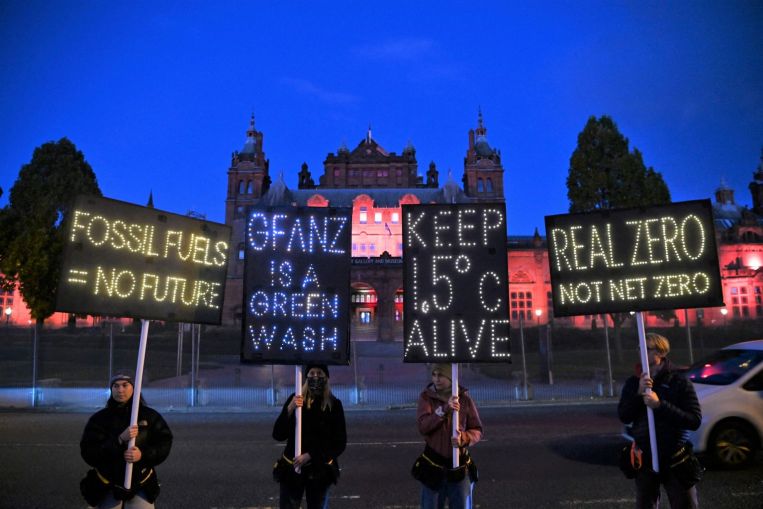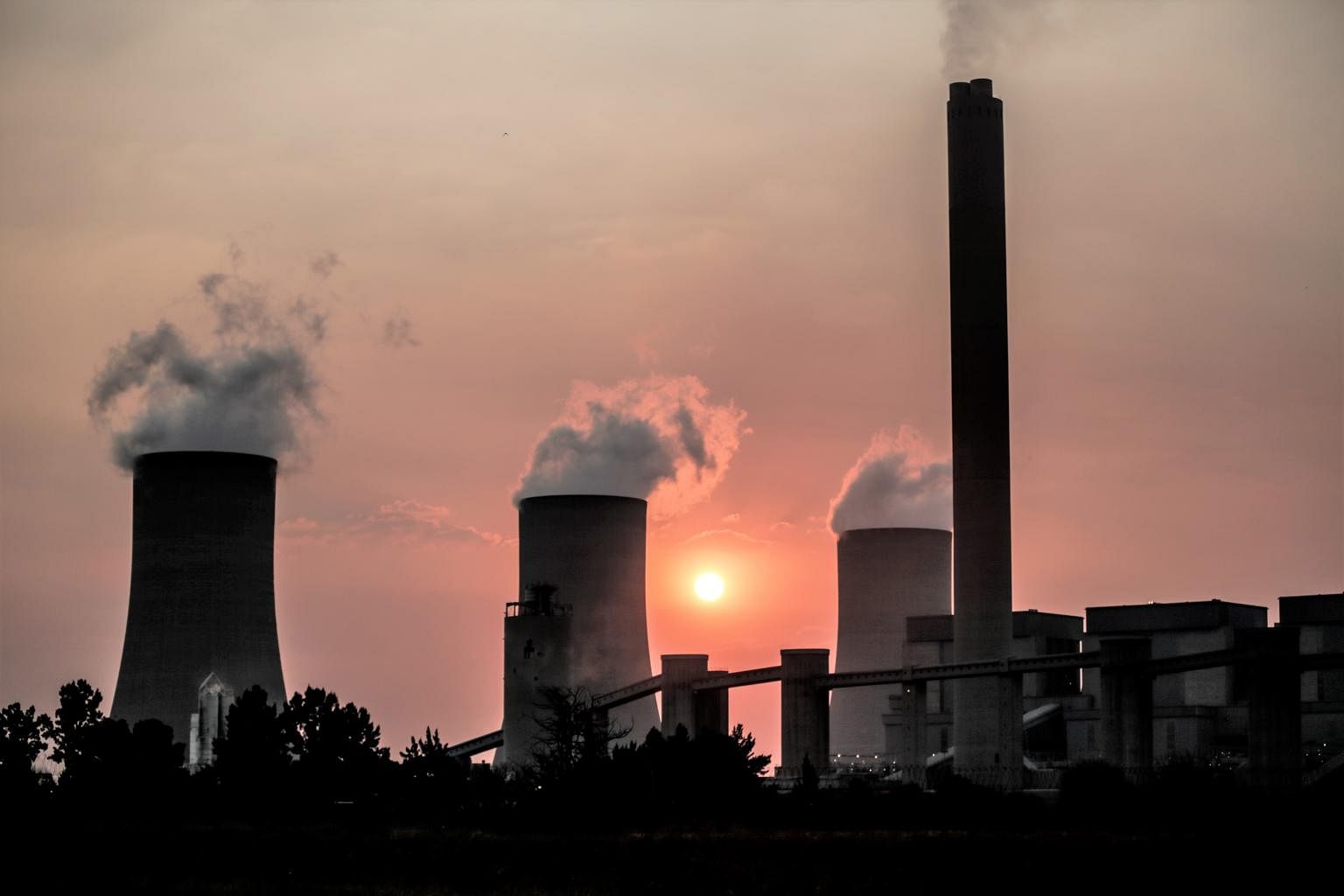GLASGOW – It’s day 10 and everyone can sense COP26 talks are in the final stretch. Early on Wednesday (Nov 10), the British hosts of the conference released the first draft of the conference conclusion.
The cover text, which reflects the views of negotiators in Glasgow, gives the first clues as to what a deal might look like. The draft will now be discussed and debated by delegates from nearly 200 nations.
There is every chance parts of the draft text will change over the course of the next two to three days. That’s normal in climate talks as nations press their demands and work to a compromise. In the end, there must be consensus from all nations for any final set of decisions to be adopted.
Any decisions taken at COP26 would help implement the Paris Agreement, the world’s main climate treaty, which enshrines temperature targets for nearly 200 nations to well below 2 deg C above pre-industrial levels and aims for 1.5 deg C if possible.
Developing nations are unhappy about some aspects of the draft text, including fuzzy language around finance to help them green their economies and adapt to climate impacts. There’s not enough clarity on the amount and source of the climate cash or how it will be mobilised.
For example, the text “notes with regret” that the goal of developed countries to contribute US$100 billion (S$135 billion) per year by 2020 to poorer nations has not yet been met. It does mention the growing financial needs of developing countries, in particular due to the increasing impacts of climate change and increased indebtedness, and calls for greater financial support for them.
Other elements, though, may be grounds for some cautious optimism.
Here’s a short rundown on some of the key areas in the new text, which could prove crucial in determining the final outcome of COP26.
1. Global climate pact mentions fossil fuels for the first time
For the first time in the nearly 30-year history of the UN climate conferences, the term “fossil fuels” has emerged in the draft cover text, with nations “called upon” to accelerate the phasing out of coal and subsidies for fossil fuels.
Director of climate group Powershift Africa Mohamed Adow told a press conference on Wednesday: “For the first time, we now have a COP text that explicitly calls for the phasing out of coal and fossil fuel subsidies, and that is a welcome step.”
The burning of fossil fuels is driving climate change, he said, and explicitly mentioning it means that the world is on the path to addressing the problem.
“For the first time in 30 years, we’re able to get it in a formal legal text in a draft form. So our task now is to protect that text, and to strengthen it by making it happen faster, but also in an equitable manner.”
But though its inclusion has been praised by multiple climate groups, observers have noted the possibility that the sentence could be removed in the final iteration of the cover text as negotiations progress.
Ms Melissa Low, a climate policy observer from the National University of Singapore’s Energy Studies Institute who is following the negotiations from Singapore, said she expects there to be backlash from certain countries on the inclusion of this statement in the final text.
“The Paris Agreement allows for bottom-up nationally determined contributions – meaning nations decide, on their own terms, what they want to do for the climate,” she said.
Ms Low explained: “It will be challenging to ask countries to phase out fossil fuel use, when they get to decide their own climate pledges.”
2. Carbon markets (Article 6)
Article 6 under the Paris Agreement lays out broad guidelines on carbon markets but left the detailed rules on how to create and implement the markets unresolved. Article 6 is just one page in the Paris Agreement.
Although not specifically mentioned in the COP26 Presidency draft on Wednesday, this ongoing branch of the negotiations has proved particularly hard to finalise after several years of talks – and it’s proving tricky at COP26, too.
The stalemate is holding up potentially billions of dollars of investments in projects, especially in poorer nations, which can cut greenhouse gas emissions and help countries meet their climate action plans as pledged under the Paris Agreement.
One part of the Article 6 negotiations covers trading of emissions between countries to meet emissions reduction obligations, while the others deal with non-market mechanisms such as projects to reduce emissions, as well as legacy emissions reduction credits from an earlier UN scheme.
The negotiations are highly technical and a key focus is avoiding double counting of credits.
The talks are still bogged down on the rules around “corresponding adjustments”, which are a tool designed to promote the integrity of emissions accounting under the Paris Agreement.
This is intended to prevent countries from counting an emission reduction more than once towards their national climate plans.
A second area of dispute is whether to allow the use of legacy credits under the Clean Development Mechanism. Some countries such as Brazil have large amounts of these credits but there are concerns using them will weaken national efforts to ramp up efforts to cut greenhouse gas emissions.
A third contentious area is over sharing of the proceeds of carbon markets. Poorer, more vulnerable countries want certainty over a percentage share of carbon market revenues, with that money feeding into the UN-administered Adaptation Fund to help poorer nations cope with increasingly extreme weather events and rising sea levels.
However, there is no clarity yet on whether a percentage of revenues will be shared, whether it will be mandatory or how much it might be.
Developing countries need more money to green their economies, cope with climate impacts and offset the costs of those impacts to reduce their national debt levels.
3. Mind your language
The language in the draft cover text can seem tentative, usually “urging”, “inviting” or “calling on” nations to pursue certain climate actions.
But observers have pointed out there is a continuum of weight to these words, with “urges” carrying more weight than “calls on”, which is more significant than just “invites”, noted Dr Simon Evans, deputy editor of news site Carbon Brief.
Ms Yamide Dagnet, director of climate negotiations at think tank World Resources Institute (WRI) said the language used in the draft cover text was not decisive enough.
She said: “What some countries want is more direct language, instead of just ‘urging’ or ‘inviting’, but also having programmes, having dates, deadlines and milestones, to make it real.”
4. More frequent updates on climate pledges
Under the Paris Agreement, new climate pledges must be submitted every five years.
The first round of pledges was made in 2015. This year’s conference – which was postponed by a year due to the Covid-19 pandemic – marks the second round of submissions from countries, setting out national climate targets for 2030.
But the draft cover text includes a provision for these climate pledges to be updated yearly instead.
Paragraph 30 of the seven-page draft cover text document “urges” countries to revisit and strengthen their 2030 targets in their climate pledges by the end of 2022.
Revisiting climate pledges yearly could spur countries to progressively ratchet up their climate ambition so the world has a greater chance of limiting warming to 1.5 deg C above pre-industrial levels.
But new research released during COP26 showed that temperature rise under the targets set by countries for 2030would be more than 2.4 deg C above pre-industrial levels by the end of this century.
Climate impacts such as extreme weather events, droughts and wildfires are set to worsen with every degree of warming, climate scientists have shown.
So certain countries, especially vulnerable nations that bear the brunt of the warming, want parties to come back every year to negotiate how to take stronger climate action so the 1.5 deg C threshold can be met.
But Ms Low noted that it could also be hard to get countries to reach a consensus on this issue as this was not what they signed up for when they adopted the Paris Agreement.
Find out more about climate change and how it could affect you on the ST microsite here.
Source: Read Full Article


